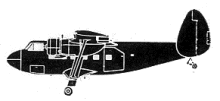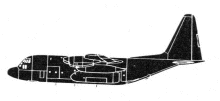Incident Overview

Description
Twin Pioneer JZ-PPX took off from Mokmer at 09:30 for a local training flight. Takeoffs and landings were practiced and after some time the captain requested and received permission to carry out manoeuvres outside the circuit. During one of these manoeuvres, a right-hand turn, the right wing broke off. The aircraft lost control and spiralled down into the sea. The wreckage stayed afloat for a while and sank. PROBABLE CAUSE: “The Commission is of the opinion that, on the ground of the available evidence of the accident with the Twin Pioneer G-AOEO, the accident with the JZ-PPX has to be put down with to certainty nearing probability to the failure of the V-brace strut due to fatigue, because both aeroplanes were equipped with the same type of liftstrut and V-brace construction and because both aeroplanes were used in the same manner. The JZ-PPX carried out many instruction flights at a low altitude, many take-offs and landings, many manoeuvres with high flight loads, possibly up to the maximum loads. The G-AOEO also carried out many demonstration flights at a low altitude with man take-offs and landings, many manoeuvres, also with possibly maximum loads. The term of life of the V-brace as declared by the manufacturer, was based on conditions of flight which are not in agreement with the reality. During a meeting at September 6, 1957, Mr MacCallum of Scottish Aviation Ltd. gave a value of 4000hrs which raised a discussion. The Commission is aware of the fact that he cannot give a positive opinion upon the cause of the accident because there are no silent witnesses present, but nevertheless is of the opinion that there is a close conformity with the accident of the G-AOEO.”
Primary Cause
Fatigue of the V-brace strut due to repeated use and fatigue conditions.Fatigue of the V-brace strut due to repeated use and fatigue conditions.Share on:



